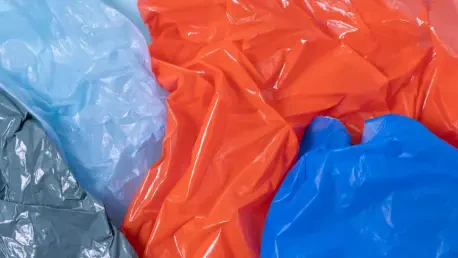In today’s interview, we gain insights from Christopher Hailstone, a distinguished expert in energy management and renewable energy, who is offering his perspectives on groundbreaking advancements in the world of recycling technology. Christopher’s expertise in electricity delivery and grid reliability dovetails with revolutionary efforts to redefine materials recycling. He shares his thoughts on the state-of-the-art methods developed by Steer World that promise to transform how we handle crosslinked polyethylene (PEX) waste.
Can you tell us about the technology behind your Omega Twin-Screw Extrusion?
The Omega Twin-Screw Extruder is a leap forward in recycling technology. It utilizes patented fractional geometry technology (FGT) to delicately balance controlled heat and mechanical shearing. This process breaks down PEX crosslinks without damaging its base structure, transforming it into a reusable material known as de-PEX. It’s an intricate dance of engineering precision, making a previously landfill-bound material viable again.
What makes the recycling of crosslinked polyethylene (PEX) such a challenge?
PEX is incredibly durable, which is why it’s favored in piping and insulation applications. However, its very resilience poses recycling challenges. Conventional recycling methods struggle to break down its tightly bonded molecular structure, often relegating it to landfills instead of recycling centers.
How does your Omega Twin-Screw Extruder address those challenges?
The Omega tackles these challenges head-on by employing its unique FGT process. By precisely controlling heat and shear forces, it breaks the crosslinks in PEX while preserving the polymer’s integrity. This delicate balance is key to turning PEX into de-PEX, a material ready for reuse.
Can you explain the concept of fractional geometry technology (FGT) and its role in the recycling process?
Fractional geometry technology is pivotal to the Omega’s success. It allows us to apply targeted stress and heat to the PEX material, decrosslinking it without inflicting damage. This precision ensures that the polymer chain remains intact, crucial for producing a high-quality recycled material.
What exactly is de-PEX, and how does it differ from traditional PEX?
De-PEX is essentially PEX that has been decrosslinked using our cutting-edge technology. Unlike traditional PEX, which is a permanent thermoset due to its crosslinked structure, de-PEX can be reprocessed and reshaped. This transformation allows it to be mixed with virgin polymers or even crafted into entirely new products.
How is the Omega machine able to control temperature zones, screw speed, and configuration so precisely?
The Omega’s modular design is at the heart of its precision. Each module can be fine-tuned to control specific parameters like temperature and screw speed. This level of control is vital for maintaining consistent and scalable decrosslinking across different production scenarios.
In what ways does this technology contribute to sustainability in the PEX industry?
By recycling PEX into de-PEX, we significantly reduce the need for virgin plastics, promoting a more circular economy. This innovation not only cuts down on landfill waste but also decreases environmental impact, steering the industry towards more sustainable practices.
How does recycling PEX with your machine impact the use of virgin plastics?
Our technology directly reduces the demand for virgin materials by turning what was previously waste into a usable resource. Integrating de-PEX into production cycles lessens the environmental footprint and reliance on new plastic production.
How can manufacturers integrate this technology into their existing processes?
The Omega system is designed with integration in mind. Its modular nature ensures it can seamlessly slot into existing manufacturing lines. By adapting current processes to accommodate this technology, manufacturers can enhance sustainability without overhauling existing operations.
What industrial applications could benefit from the use of de-PEX?
De-PEX holds promise across numerous sectors. Its versatility means it can be used in piping, cable insulation, and as a blend in various polymer applications, granting a second life to what was previously deemed waste.
Can you elaborate on the modular design of the Omega machine and its benefits?
The modular design is revolutionary, allowing each component of the Omega machine to be adjusted for specific recycling needs. This flexibility not only streamlines the recycling process but also enables scalability and consistency, making it adaptable for a range of industrial requirements.
How does Steer World’s approach redefine what materials are considered recyclable?
Our approach challenges conventional recycling methods by proving that thermoset materials, long deemed unrecyclable, can indeed be transformed and reused. This paradigm shift offers a new perspective on sustainability and material management.
What is the potential market impact of making thermoset materials like PEX recyclable?
Recycling thermosets like PEX could catalyze a shift in market dynamics, encouraging more sustainable practices and opening new revenue streams from recycled materials. The potential to lessen the environmental load while reducing costs is significant for industries relying heavily on plastics.
What challenges did you face in developing this technology and how did you overcome them?
Developing the Omega technology was fraught with challenges, from ensuring decrosslinking precision to maintaining material integrity. Our team’s relentless innovation and rigorous testing procedures helped us refine and perfect the process, overcoming these hurdles by learning and adapting at every stage.
How do you see the future of PEX recycling evolving with innovations like the Omega series?
The future of PEX recycling is incredibly promising. With innovations like the Omega series, what was once seen as impossible is now a reality. This technology not only enhances recycling capabilities but also paves the way for more sustainable industrial practices, setting a new standard in materials management.









